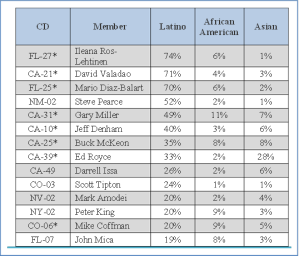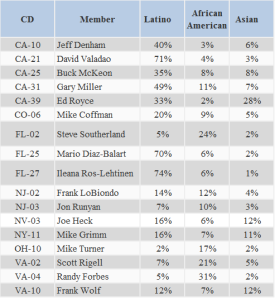By Kirk Clay
Huge Step Toward Empowering Boston’s Rising Electorate
Boston is in the middle of its first open mayoral election in twenty years, and many thought that this was the opportunity to elect the city’s first mayor of color. With the results of last week’s election, however, the top two
candidates advancing to the runoff are both white. Although this outcome was disappointing to those hoping to diversify City Hall, there is still reason to believe that a future candidate of color can prevail.
At its most simple, the candidates of color split their pool of voters, denying any of them a chance to make it into the runoff. The top two candidates, Martin Walsh and John Connolly, received 20,838 and 19,420 votes respectfully. Cumulatively, the top three candidates of color – Charlotte Golar Richie, Felix Arroyo, and John Barros – received 34,562 votes.
A closer look at past election results reveals a winning path for future mayoral candidates of color and women. The 2013 first-place finish of Ayanna Pressley, an African American woman and the first woman of color ever elected to the Boston City Council, demonstrated how unifying the voters of color is key to maximizing the impact of voters of color (VOC).
Let me explain by comparing the results of Boston’s preliminary 2013 mayoral race with Pressley’s at-large 2013 city council race. Pressley ran among a pool of 20 candidates for one of four run-off spots. She won with 17% (42,915) of the votes cast for the City Council candidates. Last week’s lead Mayoral candidates Martin Walsh and John Connolly received 18% (20,854) of the vote and 17% (19,435) of the vote respectfully. Combined that’s only 40,289 total votes, 2626 fewer votes than Pressley received in her race.
How was Pressley able to win more votes in comparison to the leading mayoral candidate—especially given the fact that Pressley competed in a larger pool of candidates? She won because she was able to consolidate her base of votes from women, people of color and progressives. Let’s look at this from a demographic perspective using Ward 18, which encompasses Hyde Park This neighborhood embodies one of the greatest VOC potentials for future Mayoral candidates of color and women.
Here some important trends that have emerged:
- This area is considered a super voter “sweet spot” – an area with a large pool of voters that consistently vote.
- Hyde Park’s African American and Latino populations grew 22% and 67% respectfully making people of color 78% of the population.
- Pressley won Ward 18 with 5490 votes.
- This year, the top 3 mayoral candidates of color Charlotte Golar Richie, Felix Arroyo, and John Barros, split the Ward 18 vote 2314, 1160, and 1039 respectively.
The splintering of the vote was also seen in neighborhoods like Hyde Park where the lack of consensus among progressive groups and voters created conflicting loyalties. Arroyo grew up in Hyde Park but found it difficult to close the vote gap without networking and unifying efforts with other candidates like John Barros.
An additional factor in this year’s race was money. For example, close to $2 million had been spent to help Walsh by September 15th and Connolly’s campaign spent more than $1.1 million by then. Charlotte Golar Richie never came close to that amount and was one of the last candidates to jump in the race. By contrast, both Walsh and Connolly had a head start while quietly campaigning before Mayor Menino announced his retirement.
Needless to say, the demographic advantage doesn’t guarantee that three strong candidates of color can run in the same election and win. However, Pressley’s citywide success points to an opportunity for investment in wards that may yield a significant return. This also means the opportunities in neighborhoods like Hyde Park have become prime openings for good candidates with commonsense messages to breakthrough. We believe that if this electorate is engaged with resources, the right message, a good candidate, and a successful voter registration campaign – we may take a huge step forward towards electing Boston’s first women or person of color mayor.
###
Kirk Clay is Senior Advisor at PowerPAC











